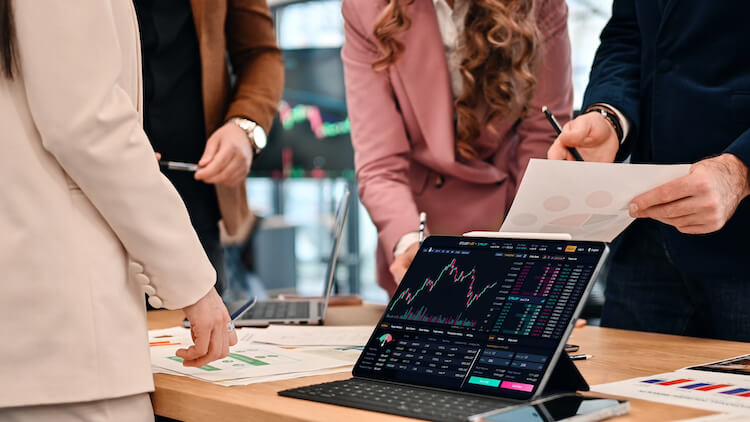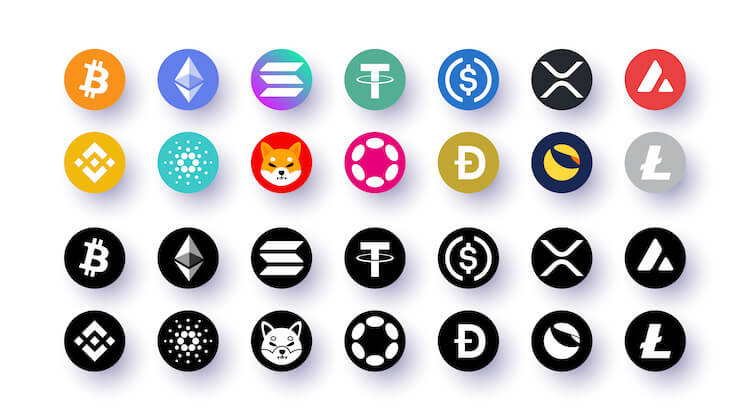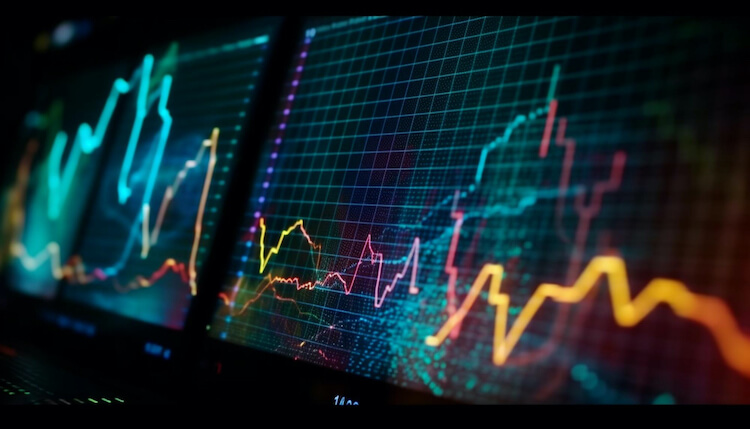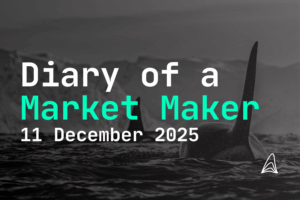
8 Best Crypto Derivatives Exchanges For Futures Trading
Table of Contents

Jakob Brezigar
Jakob, an experienced specialist in the field of cryptocurrency market making, boasts an extensive international presence. With Orcabay, he has skillfully managed major operations and deals for a wide array of global stakeholders.
What are crypto derivatives?
Crypto derivatives are financial contracts whose value is derived from the price of an underlying cryptocurrency. Common examples include futures, options, and swaps.
How do crypto derivatives differ from spot trading?
Spot trading involves buying or selling the actual cryptocurrency for immediate delivery. Crypto derivatives, on the other hand, involve contracts that give the right or obligation to buy/sell at a future date or based on a certain condition.
Why are crypto derivatives important?
Crypto derivatives allow traders to hedge against price volatility, speculate on price movements, and achieve financial leverage. They also introduce more liquidity and depth to the cryptocurrency market.
The cryptocurrency universe has witnessed unparalleled growth over the years. Particularly in 2023, the derivatives sector of the crypto world has exploded with a range of exchanges making their mark. The prominent exchanges such as Binance, BitMEX, Deribit, OKEx, Huobi, Kraken, ByBit, and FTX have dominated the crypto market in terms of volume, features, and customer experience.
For potential traders, when evaluating an exchange, it’s paramount to consider not only its trading volume but also its fee structures, security mechanisms, geographical restrictions, and the overall user experience and customer support provided.
What Are Traditional Derivatives
Before delving into the crypto derivatives, understanding the traditional derivatives is crucial. These are financial instruments whose value is derived from the price of underlying assets like stocks, commodities, or bonds. They can be traded in form of a derivative contract, where asset price matters, however one should also take into account the market transaction costs.
They have existed for centuries and have played a vital role in financial markets by allowing participants to hedge or speculate on price movements. Unlike spot trading where assets are bought or sold immediately, derivatives involve agreements to buy or sell at a later date.
Fundamentals of Derivatives Trading
Derivatives trading, at its core, revolves around agreements or contracts whose value is derived from the performance of an underlying entity—be it a commodity, bond, stock, or, in the context of our discussion, a cryptocurrency. This form of trading isn’t about owning the actual asset; instead, it’s a commitment to buy or sell said asset at a specific price and date in the future.
One of the prime attractions of derivatives trading is the ability to gain exposure to an asset’s price movements without having to hold the asset itself. This opens up opportunities for speculation, hedging against potential losses, and gaining profits from market volatility. As with any form of trading, it’s essential to approach derivatives with a clear strategy.
This involves understanding crypto market trends, leveraging sophisticated analysis tools, and constantly updating oneself about global economic and political events that could influence asset prices.

What Are Futures?
At the heart of the derivatives market lie futures contracts. They are agreements made today to buy or sell an asset at a fixed price on a predetermined date in the future. They are standardized, meaning each contract has a set amount, expiry date, and other terms. By trading futures, businesses can hedge against price changes, and speculators can potentially profit from price fluctuations.
Types of Derivatives in Crypto
Crypto derivatives can seem complex, but they generally fall into three primary categories: futures, options, and perpetual contracts. Crypto futures are agreements to buy or sell a specific cryptocurrency at a fixed price on a set date in the future.
Options give holders the right, but not the obligation, to buy (calls) or sell (puts) a cryptocurrency at a certain price.
Perpetual contracts, as the name implies, are futures contracts without an expiration date, typically with a mechanism to ensure its price stays close to the underlying asset.
In the derivatives market, the term ‘underlying asset’ holds paramount importance. It refers to the financial instrument—like stocks, commodities, or cryptocurrencies—upon which a derivative’s price is based. The underlying asset is, in many ways, the backbone of any derivative contract, be it futures, options, or swaps. It determines not only the value of the derivative but also its risk profile.
In the crypto domain, for instance, Bitcoin might serve as the underlying asset for a Bitcoin futures contracts. However, it’s crucial to understand that when dealing with derivatives, one isn’t actually buying or selling the underlying asset. Instead, they are engaging in contracts that represent the asset’s potential future value.
Hence, having a deep understanding of the underlying asset, its market dynamics, and factors affecting its price is essential for any trader in the derivatives space. It’s this intricate relationship between the derivative and its underlying asset that forms the crux of strategic trading decisions.

Leverage trading in the cryptocurrency market allows traders to amplify their exposure to price movements. By borrowing funds from the exchange, traders can open positions that are multiple times larger than their initial investment.
For instance, with 10x leverage, a trader with a $100 balance can potentially control a $1,000 position. However, this comes with increased risk, as both potential profit and potential losses are magnified.
Diving deeper into crypto futures, they operate similarly to their traditional counterparts but have cryptocurrencies like Bitcoin or Ethereum as the underlying asset. Settlement can be either physical, where the actual cryptocurrency changes hands, or cash-based, where the difference between the contract price and market price is settled in fiat currency.
The futures contract, a staple in traditional financial markets, has undergone significant transformation upon its entrance into the cryptocurrency sphere. Historically, futures have been utilized by traders to hedge against price volatility or to speculate on price movements of commodities like oil, gold, or agricultural products.
With the advent of cryptocurrency, the principles of a futures contracts were adapted to this new, digital asset class. A futures contract in crypto, similarly, allows traders to buy or sell a particular cryptocurrency at a predetermined price on a specified future date.
What’s particularly fascinating is how these contracts have evolved in the crypto space. As opposed to traditional markets where contracts have a set expiration date, in the crypto world, we see innovations like ‘perpetual futures’—futures without an expiry date.
This evolution underscores the dynamic nature of the crypto market and its ability to reshape established financial instruments to better suit its ecosystem’s unique needs and challenges.

The emergence of crypto derivatives has met several market needs. For institutional investors, they offer a way to hedge against volatile price swings. Speculators use them to capitalize on price movements without holding the actual crypto. Moreover, they play a role in price discovery and contribute to the overall liquidity of the cryptocurrency market.
Crypto options provide traders more strategic possibilities. They grant the holder the right to buy or sell a cryptocurrency at a fixed price within a set timeframe. Two main types exist: call options, which give the right to buy, and put options, which give the right to sell. Their versatility makes them suitable for a variety of trading strategies, from conservative hedging to aggressive speculation.
These are innovative financial instruments unique to the cryptocurrency world. Unlike traditional futures, perpetual contracts don’t have an expiry date. They often employ a funding rate mechanism to encourage traders to keep the contract price close to the spot price of the underlying asset. However it is harder to determine a perpetual futures contract price as many other trade derivatives prices.
Because of their perpetual nature, they allow traders more flexibility and can be more user-friendly for those unfamiliar with the futures market.
Trading Bitcoin options requires a systematic approach:
- Begin by selecting a reputable exchange that offers options trading. Research its security features, fee structure, and user reviews.
- After depositing funds, navigate to the options trading section.
- Determine a strategy based on market analysis. This involves selecting the appropriate strike price, deciding on call or put options, and setting an expiration date.
- Continuously monitor the position, considering the market’s volatility and the time decay of options.
- Based on market movement and your strategy, decide when to close the position to either secure profits or minimize losses.

Engaging in perpetual contracts involves a few key steps:
- Start by choosing an exchange that provides perpetual contract trading. Ensure its security protocols are robust and that it has a reliable track record.
- Deposit sufficient funds, considering the margin requirements for the contracts you wish to trade.
- After analyzing the market, decide on the contract size and whether to go long (buy) or short (sell).
- Pay special attention to the funding rate. This is the mechanism that keeps the perpetual contract’s price close to the underlying asset’s price.
- Regularly reassess your position, and consider setting stop-loss or take-profit levels. Close the position when your strategy or market conditions dictate.
Perpetual futures are essentially a subset of perpetual contracts that mimic the features of futures contracts. The distinguishing feature is the lack of an expiration date. Traders can hold their positions indefinitely, provided they maintain the necessary margin and manage their risk.
The choice of exchange depends on the trader’s individual needs. Factors to consider include the range of products offered, the platform’s security features, the clarity of its fee structure, its reputation in the industry, and the quality of its customer support. Doing comprehensive research and perhaps testing several platforms with small amounts can help determine the best fit.

Good derivative trading exchanges should be characterized by high liquidity, ensuring seamless trading even for large positions. They should also offer advanced trading tools, charts, and indicators to assist traders in their decision-making.
A user-friendly interface, combined with strong security measures like two-factor authentication and cold storage, is essential. Lastly, responsive customer support can be invaluable, especially in the fast-paced world of crypto trading.
Crypto derivatives play a pivotal role in modern financial markets. They facilitate price discovery, allowing the market to find equilibrium prices for assets based on supply and demand dynamics. They provide traders and investors with tools to manage risk, either by hedging against potential losses or by providing leveraged exposure to potential gains.
Furthermore, they enhance market efficiency by offering more trading strategies and mechanisms for price speculation.
One of the primary purposes of derivatives is risk mitigation. By using futures or options, traders can hedge their portfolios against unfavorable price movements. For instance, a Bitcoin holder worried about short-term price drops could enter a short futures contract, potentially offsetting any losses in their holdings with gains from the contract.

Trading crypto derivatives offers potential for significant profits, especially with the leverage that many platforms provide. They allow for a diversified trading strategy and can be a way to hedge other investments. However, the risks are also heightened. The cryptocurrency market is known for its volatility, and when combined with
leverage, it’s possible for traders to lose more than their initial investment.
By 2023, the cryptocurrency derivatives market has expanded significantly. Some estimates suggest the derivatives trading volume surpassing the spot trading volume, indicating the increasing sophistication and maturity of the crypto markets. The growth in this sector has been driven by both retail and institutional interest, with the latter bringing more legitimacy and stability to the market.

These are important risk management tools. By allowing traders to close only a part of their position, they can lock in some profits while still maintaining exposure to potential further gains. Conversely, in a losing position, it can be used to reduce potential further losses.
Crypto derivatives are, at their core, speculative instruments. Traders are essentially placing bets on the future price movements of cryptocurrencies. This speculative nature can drive significant price volatility, especially when many traders are on the same side of a trade.
Effective trading involves a combination of research, strategy formulation, and risk management. Traders should stay updated on market news, use technical analysis to spot potential trends, and have a clear entry and exit strategy. It’s also vital to never invest money that one cannot afford to lose and to use tools like stop-loss orders to manage potential losses.

The allure of high returns often comes with high risks, especially in the crypto world. Price swings of 10% or more in a single day are not uncommon. When trading derivatives, especially with leverage, these price swings can result in significant losses. Therefore, risk management becomes an indispensable aspect of trading.
Liquidity refers to the ease with which an asset can be bought or sold without causing significant price changes. High liquidity in the derivatives market ensures smoother trading and better price discovery. It’s especially important for traders who deal with large position sizes, as low liquidity can result in “slippage,” where trades are executed at less favorable prices.
Over-the-counter (OTC) derivatives are traded directly between two parties without a centralized exchange. This can lead to increased counterparty risk, as there’s no central body guaranteeing trade settlement. Traders need to be extra cautious, ensuring they’re dealing with reputable counterparties.
In the fast-paced crypto world, skipping due diligence can be perilous. It’s essential to thoroughly research any investment or trade, understanding the risks and potential rewards. This includes researching the derivatives instrument, the exchange, and the broader market conditions.
In the derivatives market, the price of the underlying asset is crucial as it determines the value of the derivative. These prices are set by market forces of supply and demand but can also be influenced by external factors like regulatory news, technological advancements, or macroeconomic factors.

Crypto derivatives operate in a rapidly evolving regulatory landscape. Different countries have varied stances, ranging from supportive to restrictive. It’s essential for traders to be aware of the regulations in their jurisdiction to avoid potential legal complications.
The entry of institutional investors into the crypto derivatives market has been a game-changer. These large financial entities bring in substantial capital, increasing liquidity, and often helping to reduce volatility. Their involvement also adds a layer of legitimacy to the crypto space, attracting other players and further stabilizing the market.
This is paramount in the world of crypto derivatives. Using tools like stop-losses, diversifying trading strategies, and regularly reassessing one’s risk appetite can help in managing potential losses. Moreover, continuous education and staying updated with market news can be a form of risk management, ensuring traders aren’t caught off guard.
While derivatives offer numerous advantages, they aren’t without drawbacks. Their complexity can be daunting for new traders, often requiring a steep learning curve. The high leverage available can result in magnified losses, and the speculative nature of these instruments can lead to significant volatility. Moreover, the lack of a standardized regulatory framework can pose challenges.

Leverage, while an attractive tool, is a double-edged sword. It allows for greater exposure with less capital, potentially amplifying profits. However, it also magnifies losses. A small adverse price move can result in significant losses, potentially exceeding the trader’s initial margin. It’s crucial to understand the implications of leverage and use it judiciously.



